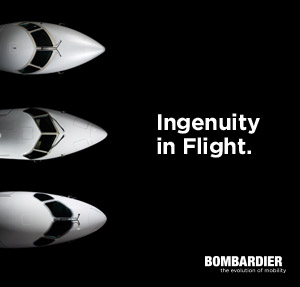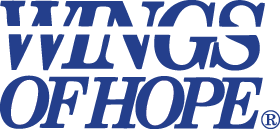Former Head of FAA Aircraft Maintenance Division Joins AAR
January 7, 2009
Cann retired from the FAA in
“Dave has a deep understanding of aircraft maintenance operations, safety programs and regulatory requirements,” said
AAR is a leading provider of products and value-added services to the worldwide aerospace and defense industry. With facilities and sales locations around the world, AAR uses its close-to-the-customer business model to serve aviation and defense customers through four operating segments: Aviation Supply Chain; Maintenance, Repair and Overhaul; Structures and Systems; and Aircraft Sales and Leasing.
Sikorsky Aerospace Services Announces $4M Contract to Provide Presidential Airways with Heads Up Display Systems
January 7, 2009
Heads Up Display allows pilots to see flight instruments and other helicopter information through an eyepiece in their helmet without having to look down at the instrument panel. The system can be used during day and night operations.
“The HUD systems are an innovative technology designed to promote safer missions because pilots can maintain a forward-looking focus,” said
Presidential Airways is a Worldwide Services company based in
Sikorsky Aerospace Services provides comprehensive support to rotary and fixed wing aircraft around the world. It offers its military and commercial customers a full portfolio of support services through its aftermarket companies, Derco Aerospace, Inc., Helicopter Support, Inc., Sikorsky Support Services, Inc., Composite Technology, Inc., and Sikorsky Aircraft Australia – Helitech.
Sikorsky Aircraft Corp., based in
Boeing P-8I Selected as Indian Navy’s Long-Range Maritime Patrol Aircraft
January 7, 2009
“The men and women of The Boeing Company are pleased that
The P-8I is a true multi-mission maritime patrol aircraft (MPA) that features greater flexibility and a broader range of capabilities than MPAs currently in service. The P-8I can operate effectively over land or water while performing anti-submarine warfare missions; search and rescue; maritime interdiction; and long-range intelligence, surveillance, target acquisition and reconnaissance.
The P-8I provides
“Throughout the negotiations, both sides worked diligently to give
A unit of The Boeing Company, Boeing Integrated Defense Systems (http://www.boeing.com/ids/) is one of the world’s largest space and defense businesses specializing in innovative and capabilities-driven customer solutions, and the world’s largest and most versatile manufacturer of military aircraft. Headquartered in
BVR Systems Awarded an Additional License Agreement for its Airborne Embedded Training Patents
January 7, 2009
“We are very pleased by this agreement,” responded BVR CEO
About BVR Systems BVR Systems (1998) Ltd. is a world leader in advanced defense training and simulation systems. The Company offers highly efficient, cost-effective solutions to the simulation, training and debriefing needs of modern air, sea and ground forces.
Airbus Delivers 12 A380s IN 2008
January 5, 2009
Airbus today reached its target of delivering 12 A380 aircraft in 2008, bringing the total number of A380s delivered to date to 13.
The first A380 was delivered to Singapore Airlines on 15th October 2007, with five more delivered to the airline in 2008. Qantas received three A380s in 2008, and Emirates four – the most recent of which was delivered on the 30th December 2008 from the Airbus delivery centre in Hamburg, Germany.
“We have met our 2008 delivery schedule”, said Tom Enders, Airbus President and Chief Executive Officer. “That was only possible thanks to a tremendous team effort. This gives us a good basis to further ramp up our production in 2009. With the in-service fleet steadily growing, our airline customers are benefiting from lower operating costs while their passengers are benefiting from unequalled cabin comfort and quietness. The environment is benefiting too. With lower emissions and noise, the A380 is the most eco-efficient aircraft in service today.”
The in-service A380 fleet has flown more than 21,000 revenue flight hours in more than 2200 commercial flights carrying more than 890,000 passengers. The world’s first full double-deck aircraft is now connecting four continents and flying on seven major international routes. A380s in service link Singapore with Sydney, London and Tokyo, Dubai with New York and London, and Sydney and Melbourne with Los Angeles.
Being greener, cleaner, quieter and smarter, the A380 is setting new standards for air transport and the environment. In addition to the quiet and spacious double-deck cabin, the A380 is also setting new industry-standards for the environment. The in-service experience has shown that the A380 consumes 20 percent less fuel per seat than the previous largest aircraft, representing the lowest fuel burn of any large aircraft ever.
The A380 not only complies with today’s noise limits, it is also significantly quieter than any other large aircraft flying today. With a range of 8 200 nm / 15 200 km, and seating 525 passengers in a standard three-class layout while being much more eco-efficient, the A380 is the ideal aircraft to alleviate traffic congestion at busy airports, while coping with growth.
Orders for the aircraft stand at 198 from 16 customers.
Airbus is an EADS company
Embraer Makes the First Delivery of the Phenom 100 Executive Jet
January 5, 2009
Entry level aircraft delivered to U.S. customer São José dos Campos, December 31, 2008 –
Embraer announces that it made the first delivery of the Phenom 100 jet, on December
24, in São José dos Campos. The aircraft, which landed today in the U.S. after successfully
completing its ferry flight, was recently certified by Brazil’s National Civil Aviation
Agency (Agência Nacional de Aviação Civil- ANAC) and by the U.S. Federal Aviation
Administration (FAA).
“What an exciting day! This is what we have been working towards, since May 2005, when
we launched the Phenom 100,” said Luís Carlos Affonso, Embraer Executive Vice President, Executive Jets. “It is truly an honor to deliver the first Phenom 100 to Jim and Betsy Frost, who have been with us since day one, not onlyas customers, but also as invaluable contributors on the program advisory board.”
James and Elizabeth Frost, the first Phenom 100 customers, live in Houston, Texas, where
Mrs. Frost runs a family partnership in real estate and mineral holdings and Mr. Frost
manages new business projects. Mr. Frost has been flying since the age of 16, and Mrs. Frost,
who began flying in the mountains of Colorado, is a Certified Flight Instructor and has logged
several thousand hours over the last 15 years.
“The Phenom 100 is fast, easy and fun to fly. I had the most fun in years while flying it during
training in Texas and while in Brazil,” said Elizabeth Frost. “We wanted a plane with which
we could entertain our family and friends on quick trips between Houston and Colorado as
well as to other destinations, and with plenty of baggage space. The Prodigy avionics system
is really easy to operate and very friendly, always providing full situational awareness.”
“The Phenom 100 is fabulous! The high degree of automation makes it a great single-pilot jet
and, as an owner/operator, I think I am already spoiled by the amazing cockpit,” said James
Frost. “The Phenom 100 completes our normal mission using less fuel and in much less time
than the turboprop it is replacing. We are looking forward to realizing the benefits of the
advanced digital design of the aircraft in lower maintenance costs and less down time.”
Following the success of the Legacy 600, the Phenom 100 entry level jet was launched in
2005, along with the Phenom 300 light jet, confirming Embraer’s commitment to the business
aviation market. In 2006, the Company introduced the Lineage 1000 ultra-large jet, which has
been certified, and its deliveries will begin in early 2009. In 2008, the Legacy 500 and the
Legacy 450 were launched in the midsize and midlight categories, and are scheduled to enter
service in 2012 and 2013, respectively.
The design, development, certification, and first delivery of the Phenom 100 took just over
three-and-a-half years, which is a distinctive achievement in the industry.
Brazilian certification was granted by the National Civil Aviation Authority (Agência
Nacional de Aviação Civil – ANAC), on December 9, 2008. Embraer also received ANAC’s
certification (CHE) to produce the Phenom 100. EASA certification is expected for the
second quarter of 2009.
A second Phenom 100 aircraft was delivered on December 29, in São José dos Campos, Brazil.
LAMA SALUTES KEY MOVES by TOM GUNNARSON and EARL LAWRENCE
January 5, 2009
January 6, 2009 — LAMA, the Light Aircraft Manufacturers Association, salutes two key figures in the success of the Light Sport Aircraft (LSA) movement, on their recent career enhancements.
Tom Gunnarson, former president of the United States Ultralight Association and most-recently President and Board member of LAMA, has accepted a position with the Federal Aviation Administration, in the Light Sport Aircraft office. Tom was instrumental in guiding the formation of the LSA Rule and, at LAMA, was a key figure in developing the industry audit system, which aids manufacturers in self-policing compliance with the industry consensus standards that made the new category possible. Dan Johnson, Chairman and President of LAMA, said, “Though we’ll certainly miss Tom’s daily participation, we know that his dedication to our industry continues within the FAA. The FAA’s gain is not our loss – it is our gain, as well.”
Earl Lawrence, vice president of industry and regulatory affairs at the Experimental Aircraft Association (EAA), has filled Gunnarson’s former seat on LAMA’s Board of Directors, adding his insight and experience in dealing with both the technical and political sides of regulation, and reinforcing LAMA’s preeminent position in the LSA industry. Johnson was pleased with Earl’s acceptance of the Board position. “Earl Lawrence has long been a source of both energy and wisdom in his advocacy and understanding of the role of Light Sport Aircraft. His addition to our Board will have immediate and long-term benefits to our industry.”
The LAMA Board of Directors includes Johnson and Lawrence, Chairman Emeritus and LAMA Founder Larry Burke, Cessna Chairman Jack Pelton, Jo Konrad, chairman of the German Ultralight Association, abbreviated as DULV (Deutscher Ultraleichtflug Verband) and founder of the European Microlight Foundation, former Kitplanes magazine editor, naval aviator and aircraft builder Dave Martin, and aircraft designers, pilots, and business leaders Phil Lockwood and Tom Peghiny, who is a member of the EAA Ultralight Hall of Fame.
LAMA, the Light Aircraft Manufacturers Association, is the light aviation industry’s trade association. Founded in 1984, LAMA represents nearly 100 members of the Light-Sport Aircraft business community including airframe manufacturers; producers of engines, avionics, and components; suppliers, distributors; flight schools; and other aviation businesses. LAMA provides the LAMA Compliance Audit to producers wishing to demonstrate third party oversight and the organization uses the LAMA Label on compliant Light-Sport Aircraft to convey this verification to consumers.
NASA Seeks Concept Proposals for Ares V Heavy Lift Rocket
January 5, 2009
(Logo: http://www.newscom.com/cgi-bin/prnh/20081007/38461LOGO)
The request for proposal defines the procurement approach for Phase I of the Ares V acquisition. The contract work will include developing products to enable NASA to successfully complete the system requirements review and system definition review, critical milestones in the development of the rocket. Completion of the system definition review will verify the design concept and demonstrate mission objectives can be met.
The solicitation includes five separate work packages available for bid. Work packages one through four include the payload shroud that will protect the Altair lunar lander during launch, the Earth Departure Stage, the core stage, and avionics and software. The products for these work packages include assessing point of departure architecture, assessing risks and opportunities, trade studies and analysis, assessment of NASA requirements and a final report. The fifth work package includes a first stage concept for an upgraded solid rocket fueled booster.
Marshall will manage the contracts, which will be awarded through a full and open competition. The selections will be made in the spring of 2009. The period of performance for each contract is 18 months with two, one-year options.
For more information about the request for proposal, visit:
http://prod.nais.nasa.gov/cgi-bin/eps/sol.cgi?acqid=131145#Draft%20Document
For information about NASA’s Ares rockets, visit:
Goodrich Appoints President, Engine Control and Electrical Power Systems
January 5, 2009
Commenting on the changes, Reusser said, “Bob has made a strong contribution to our Engine Components business. His 28 years of experience in a variety of roles at
Yancey joined
Yancey’s appointment is effective
Goodrich Corporation, a Fortune 500 company, is a global supplier of systems and services to aerospace, defense and homeland security markets. With one of the most strategically diversified portfolios of products in the industry,
Lockheed Martin and the U.S. Coast Guard Exercise $13.25 Million Contract Options to Provide Mission Systems for the HC-130J Aircraft
January 5, 2009
The aircraft’s new mission equipment and sensor packages deliver enhanced search, detection and tracking capabilities in maritime search and rescue, law enforcement and homeland security missions.
“The mission equipment makes the Coast Guard’s HC-130J an incredibly versatile aircraft, critical to meeting today’s increased mission requirements,” said
The mission-equipped HC-130J aircraft provide increased mission capability with improved fuel efficiency, higher availability and greater range and endurance. The HC-130J aircraft mission system leverages the technology that was developed for the HC-144A (“Ocean Sentry”) Maritime Patrol Aircraft and its mission system pallet. The aircraft modifications include installation of a belly-mounted surface search radar, which provides superior visibility and 360-degree coverage to assist in search and rescue missions. Modifications also include a nose-mounted Electro-Optical/Infra-Red imaging system, a flight deck mission operator station and a mission integrated communication system.
The Lockheed Martin mission system on the HC-130J is integrated into the flight area, which allows for the operators to directly coordinate with the rest of the flight crew when responding to critical missions. And unlike the HC-144A pallet solution, the HC-130J configuration leaves the cargo space fully useable.
Previously delivered HC-130J aircraft have proven their capabilities in the field. In a recent deployment, the aircraft’s mission system enabled Coast Guard operators to identify, track and assist in the interception of suspected vessels, leading to the confiscation of 10 tons of cocaine.
Headquartered in







